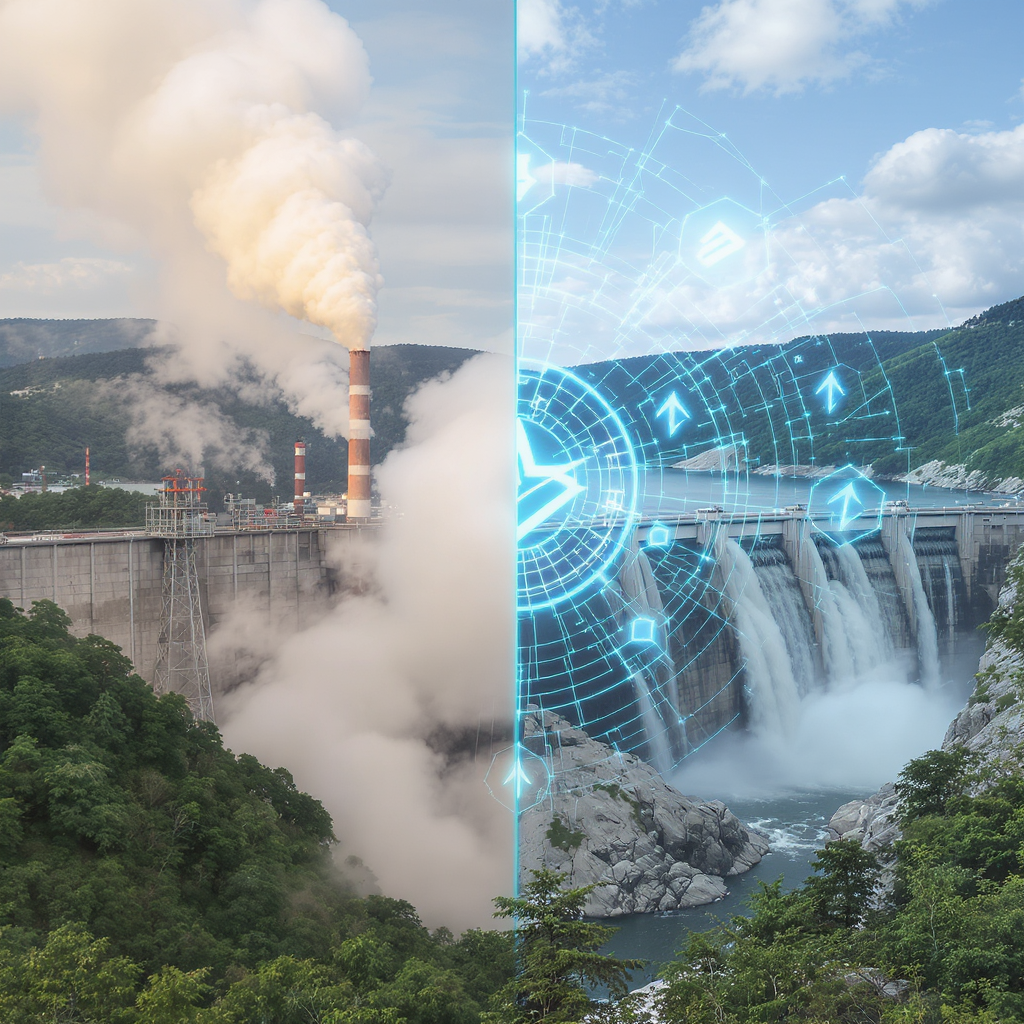When Crypto Mining Meets Green Energy – Can Digital Gold Be Ethical?

Have you ever paused to wonder what powers the invisible gears behind cryptocurrencies like Bitcoin? It’s not just lines of code or digital wizardry—it’s an enormous appetite for electricity, sometimes rivaling entire nations. Imagine a single activity consuming as much power as the Netherlands or emitting carbon on par with New Zealand. That’s the stark reality of crypto mining today.
This tension between rapid technological advancement and environmental responsibility has become impossible to ignore. Just recently, Norway announced plans to temporarily halt the establishment of new data centers that fuel power-hungry crypto mining. It’s a bold move reflecting a global reckoning: how can we reconcile digital innovation with the urgent need for sustainability?
Yet, this story isn’t merely about restriction. It’s also about transformation and hope. Across the globe, mining operations are pivoting toward renewable energy sources—geothermal in Iceland, hydroelectric in Canada—trying to rewrite the narrative. New hardware designs and cooling technologies promise dramatic reductions in energy consumption, and some networks have even shifted consensus mechanisms, slashing their carbon footprints by over 99%.
But what does this mean for us, as observers and participants in this unfolding saga? Are we witnessing a fleeting trend or the dawn of a genuinely sustainable crypto era? How will these shifts affect the broader conversation about technology’s role in our planet’s future?
By following these developments, we might not only understand the complex dance between innovation and ecology but also consider our place within it. Could the choices made today in crypto mining signal a blueprint for other industries wrestling with environmental challenges? And more personally, how might this influence our trust in digital currencies or inspire us to demand greener tech across the board?
As we watch this trend evolve, perhaps we’re invited to think beyond mere headlines—pondering how our values, technology, and the environment can coexist, not as adversaries but as partners in a shared future.
Have you ever stopped to imagine how much energy it takes to keep cryptocurrencies alive? It’s almost surreal—somewhere out there, massive data centers hum and whirl, consuming as much electricity as entire countries, all to validate transactions and secure digital ledgers. This contrast between the ethereal world of blockchain and the tangible drain on our planet’s resources makes me wonder: what does sustainability look like in such a high-stakes digital frontier?
Take Norway’s recent decision to temporarily ban new data centers dedicated to power-intensive crypto mining. It’s a striking example of how governments are stepping in, not just to regulate an emerging technology, but to protect environmental welfare. This move isn’t merely about electricity bills; it’s about the broader footprint—carbon emissions comparable to whole nations like New Zealand—that mining operations leave behind. It makes me think—have we been so dazzled by the promise of digital gold that we overlooked its real-world costs?
But there’s a flicker of hope amid this tension. Across chilly landscapes like Iceland and Canada, crypto miners are harnessing geothermal and hydroelectric energy, seeking to power their rigs with nature’s gifts rather than fossil fuels. It’s like watching a giant tech beast trying to learn new, gentler habits. And then there’s the hardware itself—sleeker, more energy-efficient ASICs paired with innovative cooling systems that not only save power but extend the life of the machines. These aren’t just technical upgrades; they’re whispers of a transformation in how we marry progress with responsibility.
Perhaps the most radical shift is Ethereum’s leap from Proof of Work to Proof of Stake. Imagine slashing energy consumption by 99.95%! It’s as if a blaring spotlight suddenly dims—showing us a path where blockchain technology doesn’t have to be synonymous with environmental harm. Yet, I wonder, is this the exception or the blueprint? Will others follow, or will the allure of raw computational power continue to drive demand?
What strikes me most is the multifaceted nature of this challenge. It’s not just about energy grids or hardware specs; it’s a societal negotiation involving policymakers, technologists, and communities. The mining industry’s pivot toward AI and other uses of existing infrastructure hints at adaptability—an acknowledgment that sustainability might require reimagining business models, not just tweaking machines.
For those of us watching or even participating in this space, there’s a call to be more than passive observers. Can we advocate for and support renewable-powered mining? Should we scrutinize the carbon footprints of the cryptocurrencies we use or invest in? And beyond crypto, how might these lessons ripple into other sectors wrestling with similar dilemmas?
In the end, the story of crypto mining and sustainability feels less like a closed chapter and more like an ongoing dialogue—one that beckons us to confront the complexities of innovation in a warming world. So, as we stand at this crossroads, I find myself asking: how will our values shape the future of technology? And perhaps more provocatively—are we ready to redefine progress in harmony with the planet’s limits, or will we watch this dance unfold from the sidelines, hoping for a miracle?
What do you think? Where do you see this balance tipping in the years ahead? Could the digital revolution become a model for sustainable innovation, or will its energy appetite remain a stubborn shadow on the horizon? Let’s explore these questions together, not as distant spectators, but as participants in a shared journey toward a more thoughtful tomorrow.

As we’ve wandered through the electrifying world of crypto mining, the profound tension between groundbreaking innovation and environmental stewardship becomes clear. From Norway’s decisive halt on new power-hungry data centers to the hopeful shift toward renewables in places like Iceland and Canada, the narrative is one of conflict and transformation intertwined. The evolution of hardware efficiency and radical consensus mechanisms like Ethereum’s move to Proof of Stake reveal a landscape not frozen in unsustainable practices but actively seeking renewal.
This exploration offers us more than facts—it invites us to reconsider how technological progress can coexist with our planet’s limits. We’ve seen that sustainability in crypto mining isn’t a distant ideal but an unfolding reality shaped by choices made today.
Action Plans
If you find yourself intrigued or concerned by these developments, consider supporting cryptocurrencies and technologies that prioritize green energy. Engage in conversations about the environmental impact of digital currencies, and advocate for transparency and innovation in energy use. Reflect on your own digital footprint and explore how your interests align with sustainability goals.
Closing Message
The story of crypto mining’s environmental journey is far from over—it’s a shared experiment in balancing ambition with responsibility. As this trend continues to evolve, what role will you play in shaping a future where technology serves both progress and the planet? Think about how this trend might impact your life and the broader world around you. I hope you find new possibilities in this change, ready to embrace the challenges and opportunities that lie ahead.

